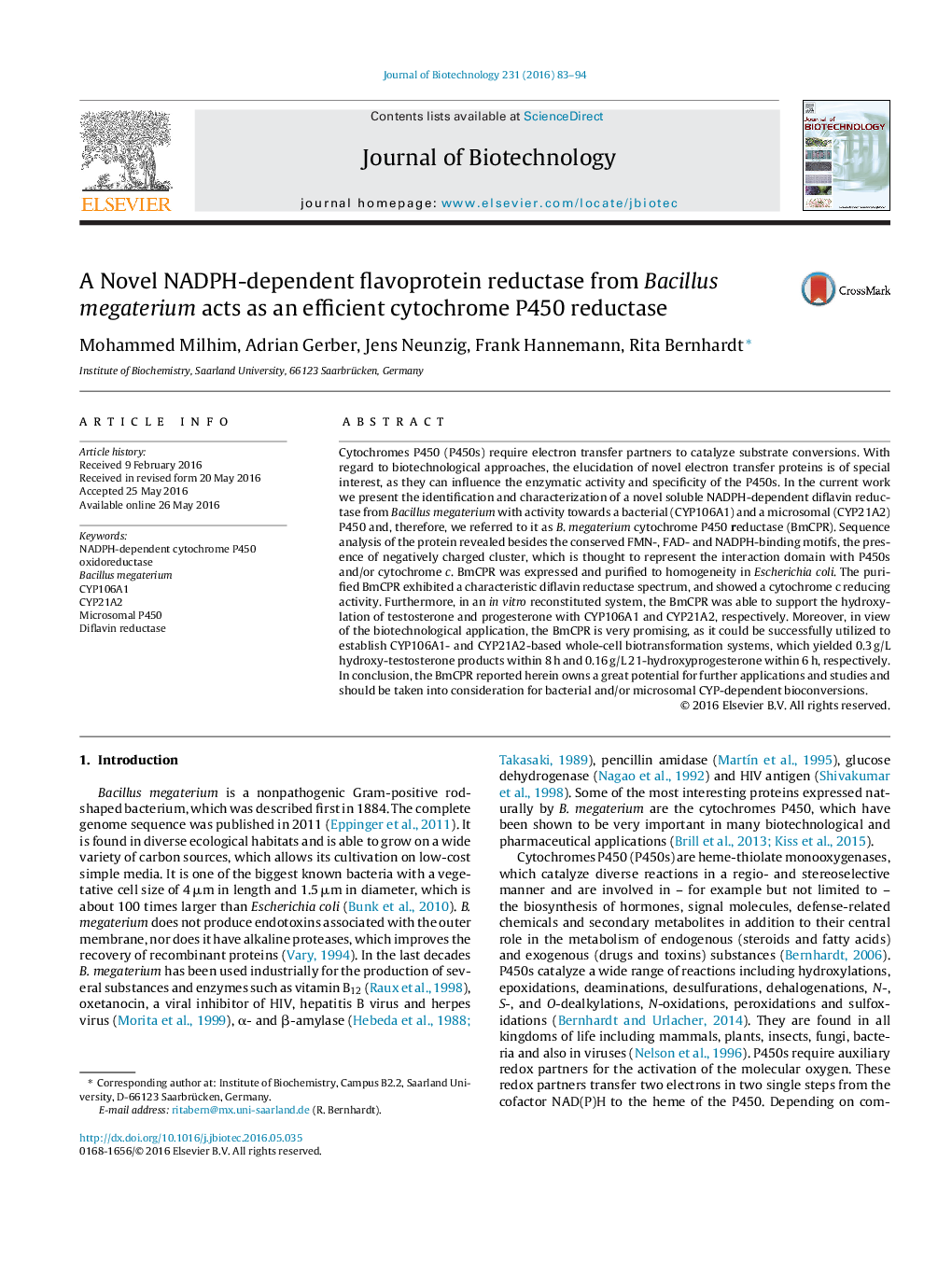| Article ID | Journal | Published Year | Pages | File Type |
|---|---|---|---|---|
| 22668 | Journal of Biotechnology | 2016 | 12 Pages |
•In vitro characterization of a soluble NADPH-dependent diflavin reductase from Bacillus megaterium is described.•The BmCPR has the ability to reduce cytochrome c.•The BmCPR functions as class II cytochrome P450 reductase (CPR).•The BmCPR efficiently supports electron transfer to the microsomal cytochrome CYP21A2.•The application of the BmCPR in the construction of an E. coli based whole-cell system is promising.
Cytochromes P450 (P450s) require electron transfer partners to catalyze substrate conversions. With regard to biotechnological approaches, the elucidation of novel electron transfer proteins is of special interest, as they can influence the enzymatic activity and specificity of the P450s. In the current work we present the identification and characterization of a novel soluble NADPH-dependent diflavin reductase from Bacillus megaterium with activity towards a bacterial (CYP106A1) and a microsomal (CYP21A2) P450 and, therefore, we referred to it as B. megaterium cytochrome P450 reductase (BmCPR). Sequence analysis of the protein revealed besides the conserved FMN-, FAD- and NADPH-binding motifs, the presence of negatively charged cluster, which is thought to represent the interaction domain with P450s and/or cytochrome c. BmCPR was expressed and purified to homogeneity in Escherichia coli. The purified BmCPR exhibited a characteristic diflavin reductase spectrum, and showed a cytochrome c reducing activity. Furthermore, in an in vitro reconstituted system, the BmCPR was able to support the hydroxylation of testosterone and progesterone with CYP106A1 and CYP21A2, respectively. Moreover, in view of the biotechnological application, the BmCPR is very promising, as it could be successfully utilized to establish CYP106A1- and CYP21A2-based whole-cell biotransformation systems, which yielded 0.3 g/L hydroxy-testosterone products within 8 h and 0.16 g/L 21-hydroxyprogesterone within 6 h, respectively. In conclusion, the BmCPR reported herein owns a great potential for further applications and studies and should be taken into consideration for bacterial and/or microsomal CYP-dependent bioconversions.
